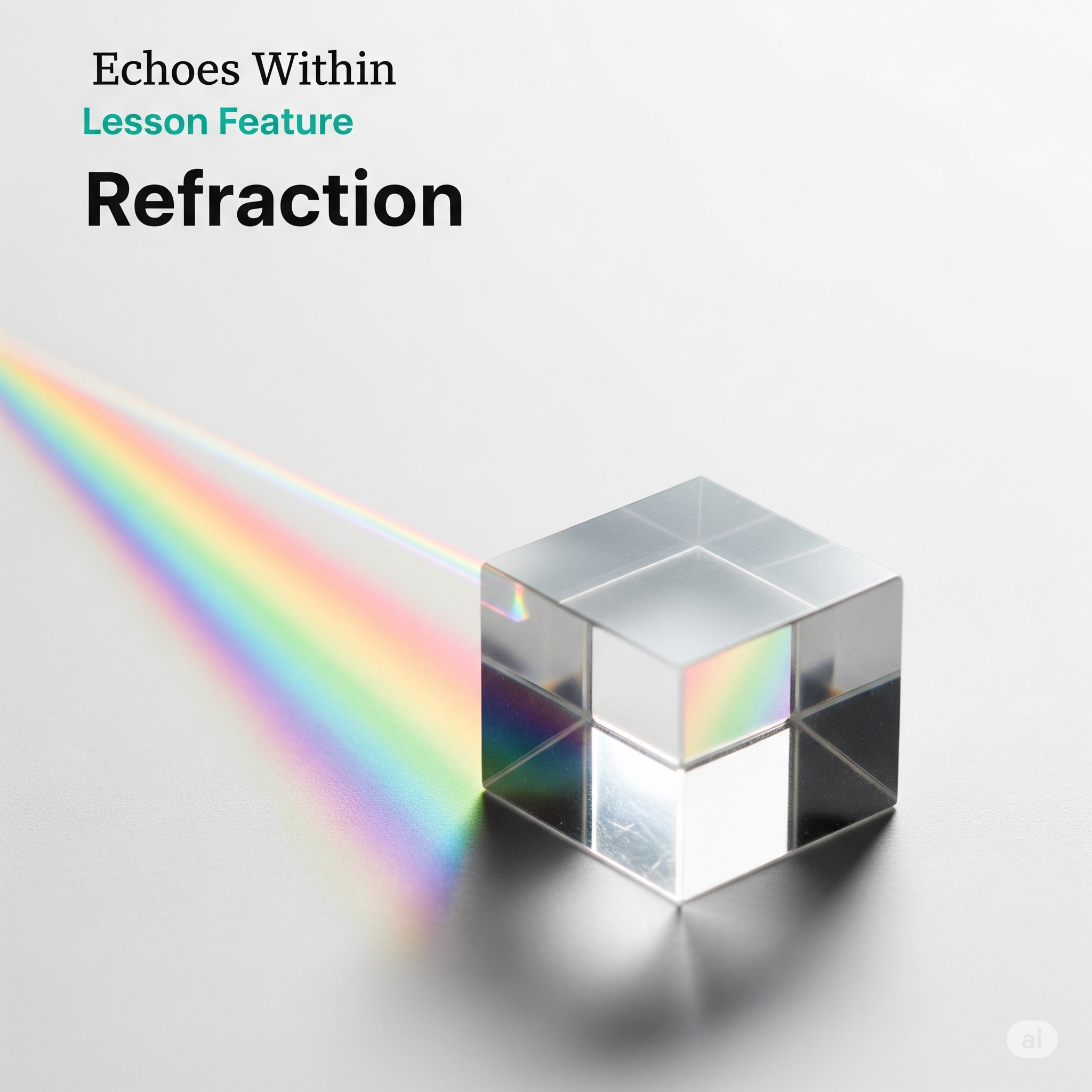
In Light: Part 1, here is a clear and concise summary note for the “Light 1. Reflection & 2. Refraction”, designed especially for SEE graduates preparing for the NEB Grade 11 Science entrance exam.
🔦 Summary Note: Light – 1. Reflection of Light

📘 Definition of Light:
Light is a form of energy that enables us to see objects. It travels in a straight line and does not require a medium for its propagation.
🔁 Reflection of Light:
Reflection is the bouncing back of light rays when they strike a smooth surface like a mirror.
🌟 Types of Reflection:
-
Regular Reflection:
-
Occurs on smooth, polished surfaces (e.g., mirror).
-
Produces clear images.
-
-
Irregular (Diffuse) Reflection:
-
Occurs on rough surfaces.
-
Scatters light in different directions.
-
No clear image is formed.
-

🔑 Laws of Reflection:
-
First Law:
The incident ray, reflected ray, and the normal at the point of incidence all lie in the same plane. -
Second Law:
The angle of incidence (i) is equal to the angle of reflection (r).
👉 i = r
🪞 Important Terms:
| Term | Description |
|---|---|
| Incident Ray | The ray of light falling on the surface |
| Reflected Ray | The ray of light bouncing back |
| Point of Incidence | The point where the incident ray strikes the surface |
| Normal | A perpendicular line drawn to the surface at the point of incidence |
| Angle of Incidence (i) | The angle between the incident ray and the normal |
| Angle of Reflection (r) | The angle between the reflected ray and the normal |
📌 Characteristics of Images Formed by Plane Mirror:
-
Always virtual and erect
-
Image size = Object size
-
The image is laterally inverted
-
The image appears to be as far behind the mirror as the object is in front
🔍 Applications of Reflection:
-
Mirrors (in vehicles, dressing rooms)
-
Periscopes and kaleidoscopes
-
Optical instruments like microscopes and telescopes
🌈 Summary Note: Light –2. Refraction of Light
📘 What is Refraction?
Refraction is the bending of light when it passes from one transparent medium to another with a different optical density (e.g., air to water).
🔑 Cause of Refraction:
Refraction occurs because light changes speed when moving between materials with different densities:
-
Light slows down when entering a denser medium (e.g., air → glass)
-
Light speeds up when entering a rarer medium (e.g., glass → air)
📐 Important Terms:
| Term | Definition |
|---|---|
| Incident Ray | A ray of light falling on the surface |
| Refracted Ray | Ray bending inside the second medium |
| Normal | Perpendicular to the surface at the point of incidence |
| Angle of Incidence (i) | Between the incident ray and the normal |
| Angle of Refraction (r) | Between the refracted ray and the normal |
| Optical Density | The ability of a medium to slow down light |
📏 Laws of Refraction:
-
The incident ray, the refracted ray, and the normal all lie in the same plane.
-
The ratio of the sine of the angle of incidence to the sine of the angle of refraction is constant:
👉 Snell’s Law:sini/sinr=μ
where μ is the refractive index of the second medium.
🧪 Refractive Index (μ):
It is a measure of how much a medium slows down the speed of light.
μ=Speed of light in vacuum (c)/Speed of light in medium(v)
🌟 Effects of Refraction:
-
A coin in water appears raised
-
A pencil appears bent in water
-
Objects in water appear closer than they are
-
Formation of rainbows, lens effects, and mirages
🔍 Rules to Remember:
-
Light bends towards the normal when entering a denser medium
-
Light bends away from the normal when entering a rarer medium
-
When light enters perpendicularly, it does not bend
🔬 Applications:
-
Lenses (in glasses, microscopes, cameras)
-
Optical fibers
-
Prisms
-
Corrective vision (eyeglasses)
🔍 You Can Also Read:
Light: Part 2
SEE Result: New Possibilities and Uncertainties for Students’ Future Careers in Nepal
